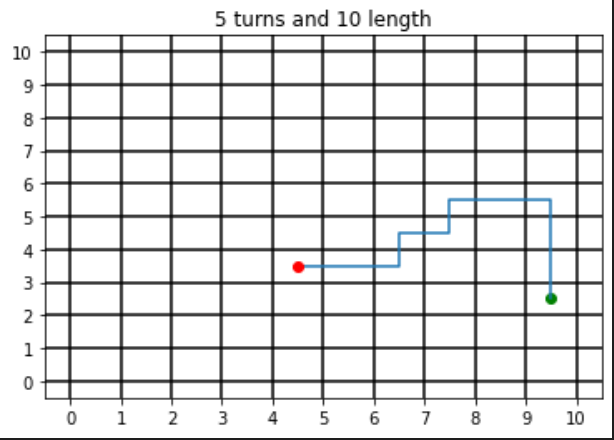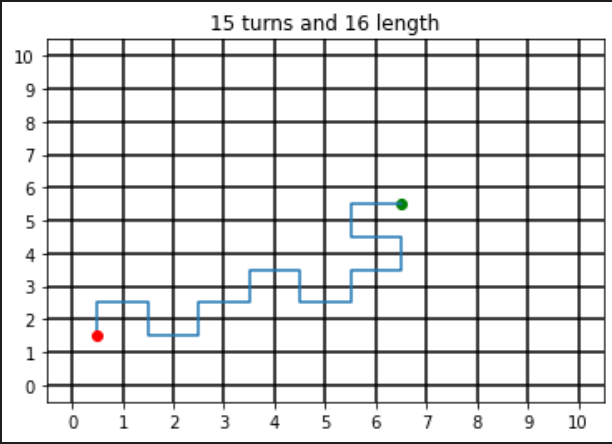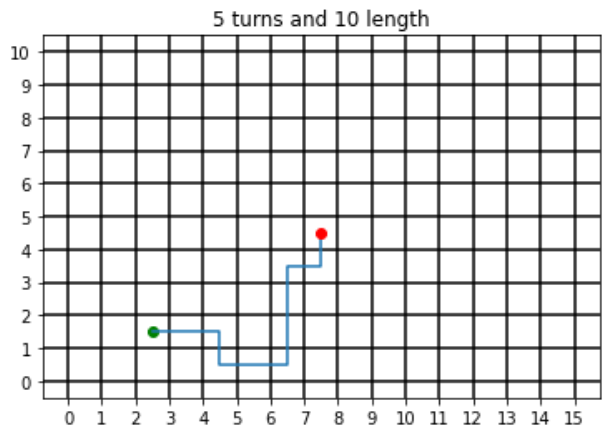Generate a random maze. See MazeAlgo_main.ipynb for a notebook of given examples.
Syntax
mg.genMaze(numTurns, pathLength)
mg.genMaze(numTurns, pathLength, Name=Value)
Description
A
mg.genMaze(numTurns, pathLength) returns a random maze with specified number of turns and path length in a 10x10 space. example
B
mg.genMaze(numTurns, pathLength, Name=Value) returns a random maze with additional options specified by one or more name-value pair arguments. For example, you can change the number of iterations or size of grid. example
Examples
General maze
Generate a general maze
numTurns = 5
pathLength=10
mg.genMaze(numTurns=numTurns, pathLength=pathLength)

Algorithm converged.
Number of turns: 5
Path length: 10
Number of iterations: 1
Execution time: 0.16 seconds
More complicated maze with more iterations
Generate a maze that has only one more length than it does turns.
numTurns=15
pathLength=16
mg.genMaze(numTurns=numTurns, pathLength=pathLength, maxIter=1000)

Algorithm converged.
Number of turns: 15
Path length: 16
Number of iterations: 16
Execution time: 2.60 seconds
Maze that isn’t a square
Generate a maze that doesn’t have the same size width and height.
numTurns=5
pathLength = 10
gridX=15
mg.genMaze(numTurns=numTurns, pathLength=pathLength, xMax=gridX)

Algorithm converged.
Number of turns: 5
Path length: 10
Number of iterations: 1
Execution time: 0.31 seconds
numTurns
Number of turns.
Number of non-overlapping turns the maze should have.
Data Types: (double, scalar)
pathLength
Length of the path.
The number of blocks the maze shoudl go across.
Data Types: (double, scalar)
Name-Value Arguments
Specified optional pairs of Name=Value arguments. Name is the is the argument name and Value is the corresponding value. You can specify several name and value pair arguments in any order as Name1=Value1,...,NameN=ValueN.
Example: gridX=15, maxIter=500 specifies a maze with 15 columns and 500 iterations to try to converge.
gridX
Number of blocks on x-dimension.
How many blocks wide.
Data Types: (double, scalar)
gridY
Number of blocks on y-dimension.
How many blocks wide.
Data Types: (double, scalar)
maxIter
Maximum iterations to test.
How many attempts to make a maze with given parameters. This may need to be increased for more complicated mazes.
More About
Tips
Issues and Discussion
Issues and Discussion.
If you don’t know how to use github (or don’t want to), just send me an email.